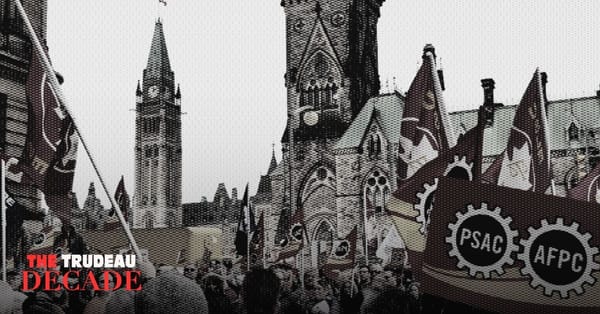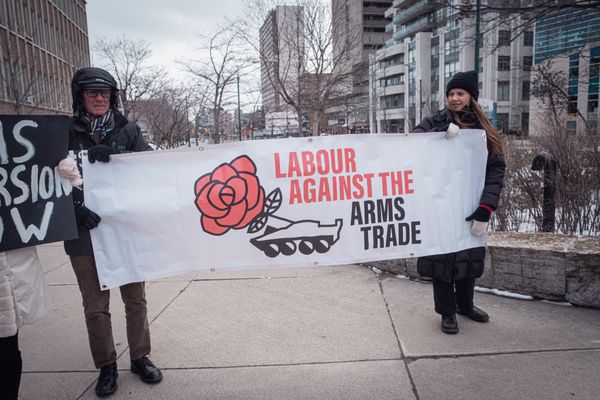If you’re an Ontarian who woke up feeling politically depressed or deflated on June 3, you aren’t alone. Though, if you had kept even one eye on the provincial election campaign, you likely knew positive news wasn’t in the offing several weeks ago. Some commentators saw nothing but “uninspiring choices” and were opting for a spoiled ballot. For what it’s worth, I’ve never been able to bring myself to that level of cynicism.
Yet there’s no finessing the point: another four years of Premier Doug Ford and his Progressive Conservative (PC) government is grim. The PCs have been elected to an even larger majority government, with fewer votes than they received in the previous contest, and amid the lowest voter turnout in provincial election history. None of this bodes well for our democracy, such as it is.
Ford and company will govern with a solid majority of 83 out of 124 seats, though their party only received 40.8 per cent of the popular vote. The Conservatives shed roughly 414,000 votes, but picked up an additional seven seats this time around. First-past-the-post: where majorities are built with minorities.
The NDP managed to hold onto their Official Opposition status, but are down nine seats after two resignations and seven incumbent defeats. The New Democrats lost more than 852,000 votes and are down by nearly 10 per cent in the vote share from 2018. Leader Andrea Horwath predictably announced that she’s stepping down from the position.
The Liberal Party, on the other hand, managed to outperform the NDP in the popular vote, but still came away with just eight elected MPPs and without official party status. Uninspiring Liberal leader Steven Del Duca is also stepping down after losing in his own riding.
It seems the province largely gave a collective sigh and sent the parties back to the legislature with only a modest rearrangement.
What lessons might the left glean from this largely uninspiring election cycle?
There are both revealing challenges and, despite the overall dispiriting result, positive takeaways following from this election cycle. The labour movement and the left can learn from and build on both.
First, there’s the issue of union party endorsements. Much has been made of several building trade unions’ endorsements of Ford and the PCs. Scotty Hertz has an insightful analysis of the dynamics that led some blue-collar unions to endorse Ford and what rank-and-file activists inside these unions might do in response.
It’s important, however, to not overemphasize the significance of a few construction union endorsements. As Larry Savage explains, there isn’t as much of a story here as some pundits have assumed, nor is this as groundbreaking as Ford and Monte McNaughton, his minister of labour, training and skills development, would like us to believe.
Unions that supported Ford and the Conservatives represent fewer than 5 per cent of Ontario’s total union members. Several union leaders, including the president of the Ontario Federation of Labour, for example, penned an op-ed endorsing the NDP and pointing out that many unions continue to support the traditional party of labour. Moreover, union leaders across the public and private sector have consistently expressed strong opposition to Ford’s anti-worker agenda.
Nevertheless, blue-collar union endorsements of the PCs are revealing and must be addressed in the long-term. To some degree, support for Ford from these unions is transactional. The service orientation of some unions generates a dynamic wherein producing jobs for members at any cost is the litmus test of successful representation. Building more highways, suburban homes and unaffordable condos is one path to such jobs — usually well-paying ones.
Ford’s development agenda, as environmentally unsustainable as it is, thus benefits some (though not all) unionized workers in the building trades. Ford and his government have also been less antagonistic to this section of the labour movement than Conservative predecessors. This has created an opening to win union endorsements and peel off more votes from blue-collar workers.
Relatedly, the party’s recent right populist orientation has been effective at splitting off some private sector unions and presenting concerns about climate change as ‘anti-development.’
Labour and the left need to address these cleavages programmatically. Calls for a “just transition” will need to materially grapple with winning support among sections of the working class and labour movement who presently benefit from environmentally harmful development.
While hardly a new insight, we too often imagine that this problem is confined to workers directly employed in the fossil fuel industry. The politics of union endorsements in this provincial election are an illustration that the issue is hardly confined to the energy and resource extraction sectors. Creating a policy programme that is both environmentally sustainable and worker-friendly requires deep consideration, as well as buy-in from workers across a myriad of industries and occupations.
Although blue-collar union support for Ford grabbed most of the labour and politics media attention, other unions continued with their “strategic voting” approach, despite scant evidence that it has been effective at keeping Conservatives out of the legislature.
‘Strategic voting’ in effect draws labour support, personnel and resources away from the NDP and behind Liberal candidates in riding contests where the NDP is expected to fare poorly. For example, while the Ontario Secondary School Teachers’ Federation endorsed 61 NDP candidates, they also backed 33 Liberal candidates. In the long-term, strategic voting undermines attempts to restore and build on the historic relationship between labour and its ostensible social democratic party.
Of course, endorsements from union leaders are one thing; the votes of union members are quite another. The degree to which union leadership can mobilize members to vote for particular candidates remains an open question. Perhaps the better way to approach the issue is by building the grassroots support for left NDP candidates and a labour-backed policy programme within unions themselves. Ultimately, union members will have to fight for labour-friendly endorsements.
On the positive side, despite serious setbacks, the NDP caucus retains good activist MPPs. NDP incumbent for Ottawa Centre, Joel Harden, was reelected with more votes than he originally received in 2018. In the last election, Harden managed to increase the NDP’s vote share in Ottawa Centre by more than 25 per cent. This time around, he added another 8.3 per cent to that vote gain. In another inspiring victory, NDP candidate Chandra Pasma was elected in Ottawa West-Nepean, a seat which narrowly went to the Conservatives in the last election, after being a Liberal stronghold for the duration of the McGuinty-Wynne years. Jill Andrew held her seat in Toronto-St. Paul’s. Obviously, these are silver linings and don’t make up for the NDP’s loss of seats and votes, but there’s much to be learned from the grassroots organizing of these campaigns.
A second straight collapse of the Liberal Party should also be celebrated. Admittedly, the Liberals managed to grow their popular vote share from 2018, but thankfully their votes were dispersed enough to fall short of official party status again. Del Duca was completely rudderless throughout the campaign, and it showed.
The combination of a collapsed Liberal Party and a change of leadership in the NDP could give the left an opportunity to both reshape the party and cement itself as the ‘government in waiting’ next time around. Part of bringing the left to electoral power in Ontario involves supplanting the Liberals more or less permanently. There’s an opportunity to do this, if grassroots activists in and around the NDP can manage it.
Last, workers’ issues remain on the political agenda following an election cycle that saw some important organizing work take place. Justice for Workers’ “Decent Work” campaign used the election as an opportunity to organize low-wage workers and continue to build public support for labour reforms, such as paid sick days and a $20 minimum wage. There’s great potential to keep this momentum up in the years ahead, to challenge the Ford government at our workplaces and in the streets.
Labour activist and songwriter Joe Hill’s infamous entreaty, “Don’t mourn, organize,” seems somewhat trite after so many invocations. But it remains apt. There’ll be plenty to organize for and against over the coming four years.







